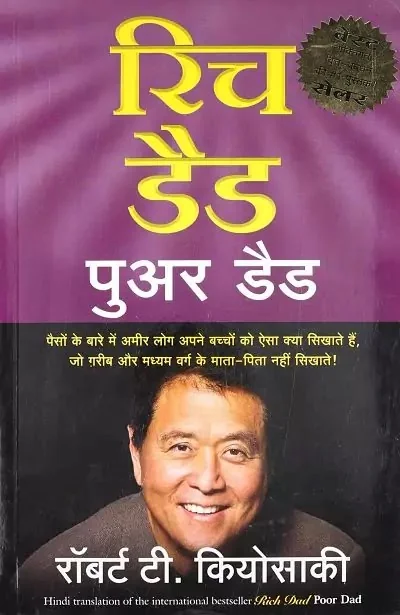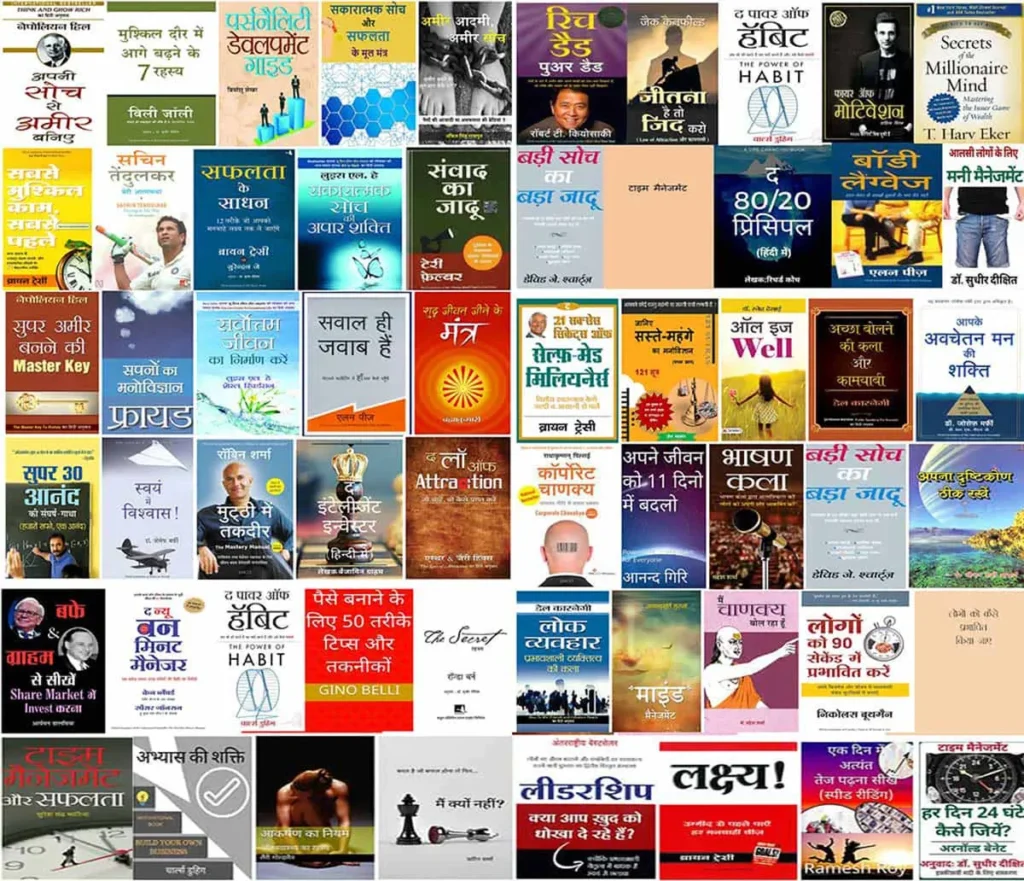I am familiar with the book “Rich Dad Poor Dad”. This is a personal finance and self-help book written by Robert T Kiyosaki. The book was first published in 1997 and has since become one of the best-selling personal finance books of all time.
I Like it very much and I am providing this book to you at free of cost. Just Scroll Down.
In the book, Kiyosaki contrasts the financial philosophy and practices of his “rich dad” (his friend’s father) with that of his “poor dad” (his biological father). The book talks about the importance of financial education, investing and building wealth through property. He has been praised for his practical advice and approach to money, and has had a significant impact on the way many people view personal finance.
How much Chapters in this book?
“Rich Dad Poor Dad” by Robert T. Kiyosaki is divided into several chapters, each covering different aspects of personal finance and wealth-building. The exact number of chapters may vary depending on the edition of the book, but here is a general outline of the main chapters:
- Rich Dad, Poor Dad
- The Rich Don’t Work for Money
- Why Teach Financial Literacy?
- Mind Your Own Business
- The History of Taxes and the Power of Corporations
- The Rich Invent Money
- Work to Learn—Don’t Work for Money
- Overcoming Obstacles
- Getting Started
- Still Want More? Here Are Some To Do’s
- Final Thoughts
Each chapter explores specific concepts and lessons related to financial education, investment, entrepreneurship, and mindset. The author uses anecdotes from his own life and the contrasting financial philosophies of his “rich dad” and “poor dad” to illustrate these principles.
What will you learn from this Book?
“Rich Dad Poor Dad” offers several key lessons and insights related to personal finance and wealth-building. Here are some of the key takeaways you might gain from reading the book:
Difference in Mindset:
Kiyosaki discusses the different mindsets of individuals when it comes to money. The “rich” mindset is characterized by a focus on financial education, investing, and making money work for you. On the other hand, the “poor” mindset is often associated with a reliance on traditional employment, job security, and a fear of taking financial risks.
Assets vs. Liabilities:
Kiyosaki introduces the fundamental concept of distinguishing between assets and liabilities. Assets are things that put money in your pocket, such as investments or income-generating properties. Liabilities are things that take money out of your pocket, such as debts or expenses. The idea is to focus on acquiring assets to build wealth.
Importance of Financial Education:
The book emphasizes the importance of financial education as a key determinant of financial success. Kiyosaki argues that being financially literate is crucial for making informed decisions about money, investments, and wealth-building.
Making Money Work for You:
Kiyosaki encourages readers to move beyond the notion of working for money and instead focus on making money work for them. This involves investing in assets that generate passive income, such as real estate, stocks, or businesses.
Entrepreneurial Mindset:
Even if you are employed, Kiyosaki suggests adopting an entrepreneurial mindset. This involves thinking creatively, seeking opportunities, and being open to different ways of generating income. The goal is to take control of your financial future rather than relying solely on a paycheck.
Critique of Traditional Education:
Kiyosaki challenges the traditional approach to education, arguing that the conventional school system often fails to teach practical financial skills. He advocates for self-education and continuous learning, particularly in the areas of finance, investing, and entrepreneurship.
Understanding Taxes:
The book discusses the impact of taxes on wealth and encourages readers to understand the tax system. Kiyosaki suggests that being aware of tax strategies and laws can help individuals make better financial decisions and minimize tax liabilities.
Taking Control of Your Financial Future:
“Rich Dad Poor Dad” inspires readers to take an active role in shaping their financial destinies. This involves breaking free from the traditional mindset of working for a paycheck and, instead, actively seeking opportunities to build wealth through investments and entrepreneurship.
Risk-Taking and Overcoming Fear:
Kiyosaki acknowledges the role of risk-taking in wealth-building and addresses the fear of failure that often prevents people from taking financial risks. He suggests that learning to manage and take calculated risks is essential for financial success.
Investing in Yourself:
The concept of investing in oneself involves continuous self-improvement, education, and skill development. Kiyosaki argues that personal development and acquiring new skills contribute to increased earning potential and financial success over the long term.
It’s important to approach these lessons with a critical mindset and consider individual circumstances, as financial advice may vary based on factors such as risk tolerance, goals, and economic conditions.
Download “Rich Dad Poor Dad” in Hindi Version


Grab 800+ E-Books in Just Rs.249

Download All These 800+ Hindi E-Books at Just Rs.249/-
Rich Dad Poor Dad Robert Kiyosaki Audio Book




